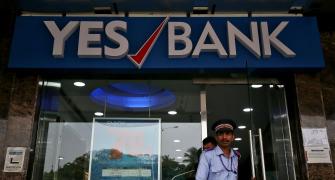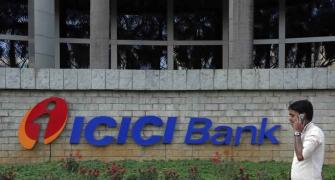Mahindra & Mahindra's subsidiary and the country's largest vacation ownership company, Mahindra Holidays & Resorts is floating a Rs 192 crore IPO (excluding Rs 108 crore offer for sale by M&M) to fund its expansions and greenfield projects.
The 12-year old company which has 96,000 members owns 27 resorts around the country and Thailand is adding more to its room inventory by way of expansion and acquisitions to take care of the estimated increase in demand for its services.
The revenue model
The company derives its revenues from four sources--membership fee, annual subscription fee, interest on EMIs and service revenues offered at the resort.
The major chunk of revenues comes from membership fee which so far works out to an average of Rs 2.5 lakh per subscriber. This is divided into admission fee (60 per cent or Rs 1.5 lakh) and entitlement fee which accounts for the rest.
The subscription entitles members the choice to take a holiday at any of their 27 resorts (plus upcoming resorts), for seven days each year, in a season and apartment type of their choice, for 25 years--this would be based on the grade of the membership. The annual subscription fee (or maintenance expenses) at about Rs 8,500 per member per year is another source of revenue.
The company also derives revenues from the 16 per cent interest that it charges its members who opt to pay for subscription to the holiday packages in equated monthly instalments. Finally, revenues from food and beverages and entertainment services are also a major source of revenues.
Expanding membership
The company has been launching a number of brands and services over the years to cater to various age groups and budgets. In addition to its mainstay brand Club Mahindra Holidays targetted at the age group between 30-55 years and offering a 7-day stay for 25 years, it has launched Zest for young urban families which allows for shorter breaks of 6 days every year for 10 years. The company also has a plan for corporates and senior citizens which allows them to use its facilities in off-peak periods.
The company launched a travel portal in 2008, which allows it to tap the travel services pie of its subscribers. The company also has Homestays concept which it launched in London last year and in some locations in India wherein subscribers can opt to stay as guests at homes owned by third parties.
All these brand initiatives and aggressive marketing has helped the company grow its base by a CAGR of 34 per cent over the last five years to over 96,000 members but inventory at 1261 apartments and cottages hasn't caught up.
The company, however, says that only 63,000 members are eligible to stay at its resorts, as there is an 18 month waiting period from the date of registration and on an average its resorts are filled up only 4.2 days a week leaving enough room for more customers as of now.
The issue for the company, however, is that most members might choose a single location at the same time period and year making it difficult to accommodate them all and could result in dissatisfied customers.
However, the company says that the low delinquency rate of 4 per cent and 35 per cent of all new members coming by way of referrals indicates that customers are happy with the services offered.
Future plans
The company is on the look-out to add new rooms through expansions at its current facilities, greenfield projects and acquisitions. It will use over Rs 200 crore from IPO proceeds to set up resorts at Tungi (Lonavla) and Theog (Shimla), expand Coorg (Karnataka) and Ashtamudi (Kerala) resorts and renovate its property at Ooty.
All these measures will help it add another 500 rooms over the next one year. Considering that it added 19,000 new members in FY09 and a higher number expected in the current fiscal, the company will be just about able to match the increase in numbers.
The company plans its expansions based on the fact that it will need one room for incremental additions of 50 subscribers.
The slowdown effect
The economic downturn in the second half of 2008 meant that the company's financial took a hit in the December quarter. A slowdown in the BFSI segment which accounts for a significant chunk of business dragged down the incremental growth in subscriber base (from 21,000 in FY08 to 19,000 in FY09), revenue growth (slower growth of 18 per cent vs 5-year CAGR of over 43 per cent) and net profits (down 6 per cent) of the company in FY09.
The company believes that its diversification strategy across age groups, income segments, industries and geographic segments (Tier 2 and lower) should protect it to an extent from adverse situations in the future.
The company believes that it can keep its costs down as a majority of its land bank centred in Tamil Nadu, Karnataka, Andhra Pradesh, Kerala and Maharashtra have been acquired at low rates helping it keep the land costs at under 2 per cent of the development expenses.
Valuation
Ever since it started making profits in 2002, the company has registered robust growth rates in sales and profitability parametres. For the period FY05-FY09, revenues and net profits averaged 43 per cent and 58 per cent, with FY09 being the exception.
The biggest cost for the company are sales and marketing expenses which though high compare well with international benchmarks of 50 per cent. While the lack of comparable peers make it difficult to value the company, the issue price at Rs 275-Rs325 is 32 per cent lower than the price paid last year by SBI and PE firm Jacob Ballas for a 2 per cent and 1 per cent in the company respectively.
Even though there is no strict comparison to other hospitality players if we are to use Indian Hotels which trades at 16 times its FY10 estimated earnings as a benchmark, the Mahindra Holiday IPO which is priced at a 22 times its FY10 estimated EPS at the lower band looks a tad expensive.
While there is little doubt that the company's business model, sustainability of revenues, market dominance and the growth opportunity are attractive, we believe Mahindra Holidays should have left more on the table for the investors. Invest, but with a 2-3 year perspective.
- Issue opens on: June 23
- Issue closes on: June 26








